When people ask about my job, I say “I’m a Designer”, which is the career I've had for almost 25 years. But that only occupies me during the working day.
The other 120 or so hours of the week are taken up by my real job, which is being a parent.
Being a parent is hard work. You’re on call 24/7 and from day one, you’re faced with a barrage of challenges.
How do you get your child to sleep? How do you feed it? Why is it still crying? How do you stop it scribbling wax crayon all over the newly painted hallway?
I listened to Charlie Brooker when he appeared on Desert Island Discs and he summed parenting up perfectly. He said, “having kids, ruins your life in the best possible way.”
But I’m not complaining, not really.
Because being a parent is also awesome, even if, like me, you’ve got four kids.
And I’m always looking for ways to get more out of the time we have together.
Which is where design thinking comes in.
Dad, what are we doing today?
My story starts on Saturday 23 June 2018 at 07:01 am.
I can guess what you’re thinking: “Paul, you’re a sleep-deprived father of four – how can you remember such a specific date and time from almost five years ago?"
Well, this was the exact minute I had my a-ha! moment.
Suddenly the pieces of the jigsaw fell into place and I began my journey to becoming a #DesignThinkingDad.
On this particular morning, I was lying in bed, half asleep after turning off my alarm, when my wife said, “Are you sure you’re going to be alright today?”
It took me a minute to work out what was going on.
Why did she have her coat on? Where was she going?
I listened to her quietly go downstairs, and then leave the house.
Then I remembered… I’d agreed to spend the whole day looking after the kids, on my own. No second pair of hands, no backup.
The house was perfectly silent for about 20 seconds. I could hear birds outside, a passing delivery van.
Then there was giggling, followed by an army of feet on the stairs. My bedroom door burst open and I was hit with the question I'd been dreading: “Dad, what are we doing today?”
It was loaded with meaning. My kids were looking for leadership, for clear direction. They wanted me to decide how we should spend this precious day.
But I was tired, I hadn’t woken up, or even had coffee – was I really the best person to decide?
How could I instinctively know what each of my four kids wanted from the day ahead?
In the past, days like this had quickly descended into squabbling and bickering.
Each of the kids felt annoyed that we weren't doing what they wanted to do, and I felt exhausted after spending so much mental energy parenting them.
But this Saturday was going to be different.
In a moment of inspiration, I decided what I needed to do was bring my work home.
Domestic design thinking
Before you start telling me what an awful parent I am, let me tell you a little about the work I do.
In my role as a design consultant, my job is to enable teams to collaborate, explore and solve complex problems, while focusing on creating the right things for the right people.
One of the tools we use is design thinking.
Design thinking is a non-linear, iterative process for creative problem solving.
It enables teams to understand users, challenge assumptions, redefine problems and create innovative solutions.
At this point in my career, I’d be with SPARCK for about five months, during which time I’d experienced first-hand how design thinking, combined with agile ways of working, could enable teams to deliver valuable outcomes, at pace.
Surely, I thought, if design thinking can work at this scale, I could use it to shape my approach to the challenges of parenting?
So, that Saturday, 23 June 2018, I was thinking: “If I was at work, what might I do in this situation?” Then, some kind of drowsy inspiration hit me, and I said, “Let’s try an experiment.”
By taking “Dad, what are we doing today?” and turning it into “Let’s try an experiment”, I’d immediately taken away the pressure to get things right.
It’s an experiment. It might work, or it might not. Let’s give it a go anyway.
They relaxed, I relaxed, and we were all were ready to get creative.
I gathered the tools of my trade – sticky notes, marker pens, dot stickers – and we ran what I guess you could call a design thinking workshop.
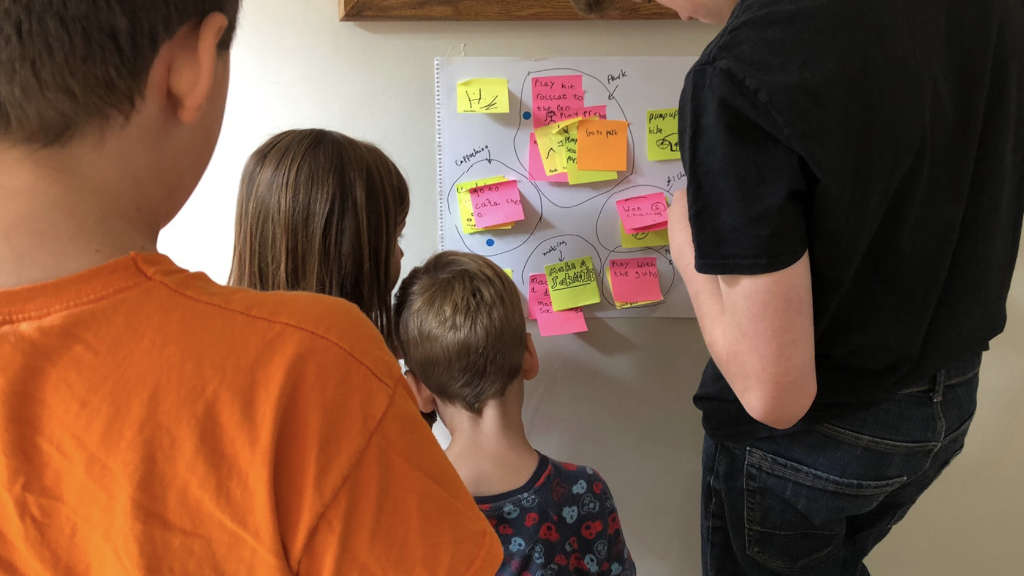
How might we create an awesome day?
We started with an exploratory discussion about what makes an awesome day, before writing all our thoughts on sticky notes.
My youngest, who couldn’t really write at that time, did drawings.
Then, after a few minutes, we put all the notes on the wall and grouped things that were similar.
For example, which activities could happen in the same place, like the park?
Next, we had a round of dot voting (everyone gets some sticky dots and puts them on the notes they'd like to prioritise) to decide which activities were most popular.
Finally, once we’d identified which activities we’d all enjoy, we mapped them out on a simple visual timeline to design how our day would work in practice.
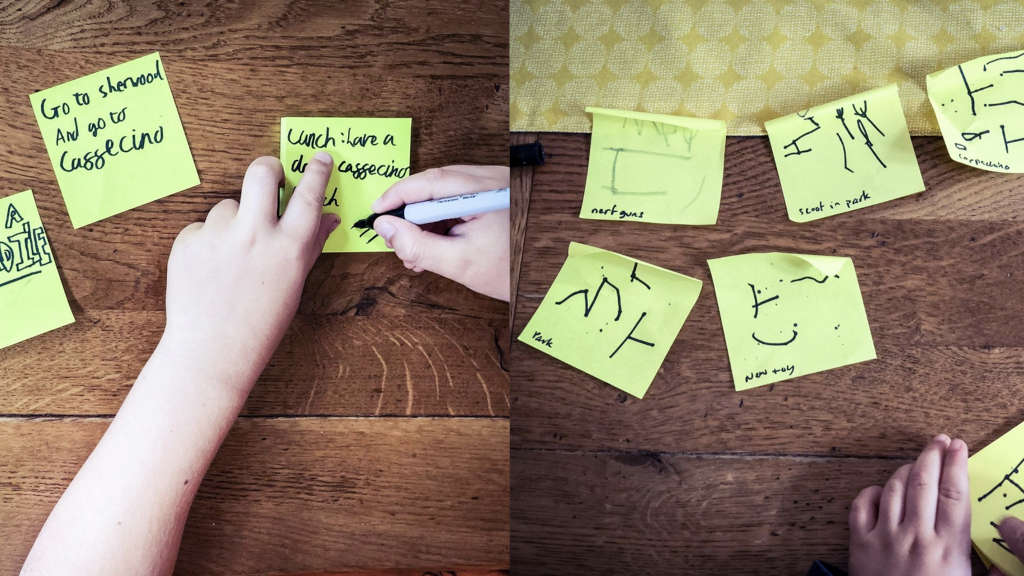
And guess what? It was an awesome day.
We had some real quality time together.
There was no arguing as everyone got to do things they enjoyed.
And whenever we weren’t sure what to do next, we could refer to the timeline stuck to the fridge.
That simple plan – note, sort, vote, map – was surprisingly effective in practice.
I've got a couple of tips if you decide to try this at home:
- Permanent markers don’t come off furniture, or children’s faces, so use felt tips.
- Let your partner know you’re going to try it – they might think you’ve lost it when they come home and find the living room covered in sticky-notes.
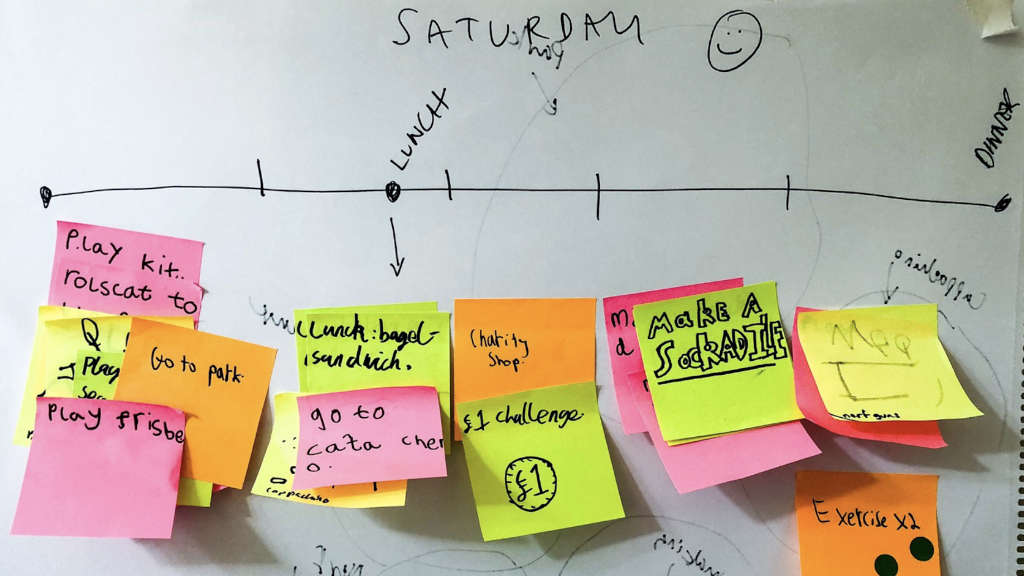
What other parenting pain-points could I fix?
After this initial success, I was curious about which other parenting pain points might be eased with the power of design thinking.
So, I mapped out a ‘day-in-the-life’ to see what activities we did on a typical day and identified the points where the kids were often unhappy, or where I tended to grumble.
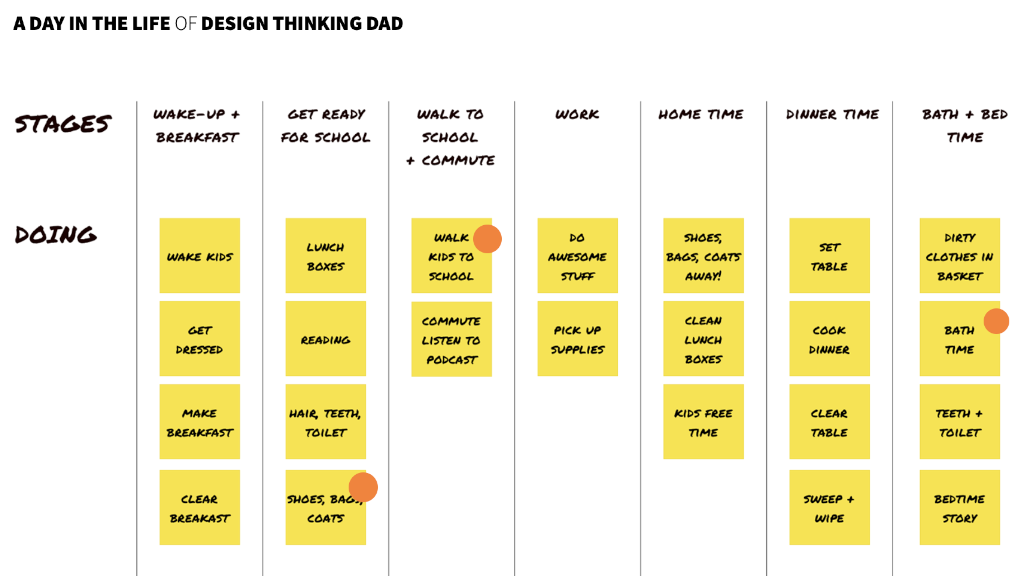
At that time a big pain point was the school-run.
Every morning, they'd ask: “Dad, do we have to walk to school today?”
I was trying to get everyone out of the door and get to work on time and there was this constant fuss, which usually led to me barking at them. And I don’t want to be the kind of dad who barks.
So, at the weekend, we co-ran another workshop, this time asking, “How might we make the walk to school more enjoyable for everyone?”
First, we captured questions:- How long is the walk?
- Is the walk longer if you have smaller legs?
- How many steps does it take?
- Are there any shortcuts?
- How long would it take in a helicopter?
- How long would it take a bee to fly?
- How far do our friends have to walk?
To answer some of these questions, we used Google Maps and my kids became fascinated by the blue dots Google uses to show a walking route.
So, more questions:
- What if those blue dots really existed?
- How many dots would there be?
- How far would it be between dots?
- How many dots would it take to get to school?
Off the back of that, we created the ‘dot-to-dot dash’. I gave each of them 20 sticky dots that they could place anywhere along the route.
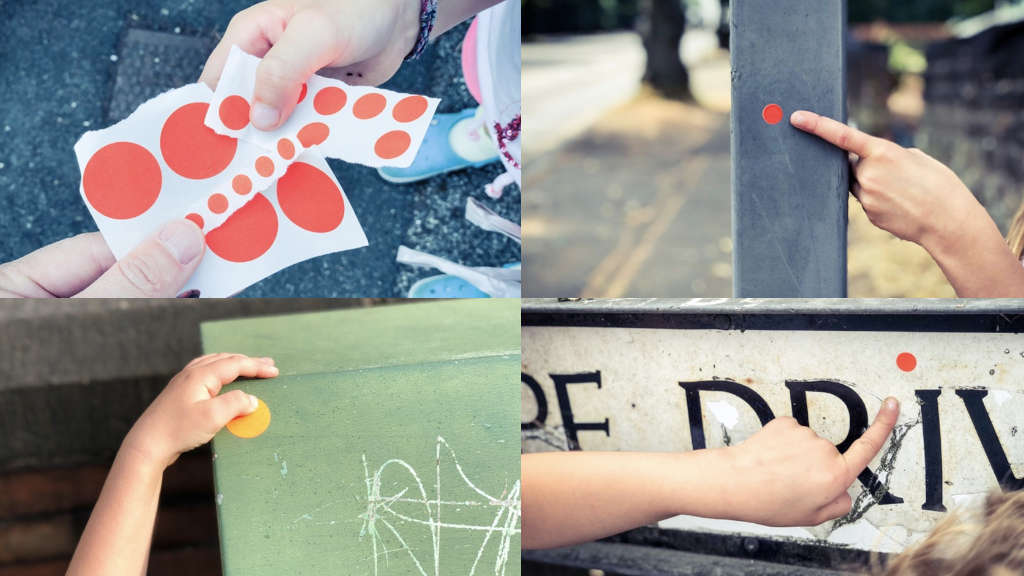
The idea was to break the journey down into smaller units. Instead of walking from home to school, you were walking from home to Dot 1, then from Dot 1 to Dot 2, and so on.
The outcome was that the kids started to look forward to the school run. They liked counting the dots and wanted to find them all every morning.
A bonus for me was that getting out of the house became much easier and we shaved about 1 minute 12 seconds off our usual school run time. (Yes, I did A/B testing.)
What does this tell us about design thinking?
The basic principles of design thinking are easy to adopt and can be applied to help solve a variety of problems.
From the challenges of parenting to reimagining policy, improving sustainability, or increasing collaboration across organisational silos, it can break bad habits and identify solutions that work for everyone.
What I learned from redesigning my approach to parenting applies to the world of work too.
We don’t have to put up with things the way they are.
By empathising with your users, understanding their needs, challenging assumptions, prototyping, testing and iterating, you're more likely to create a better future, while also having fun.
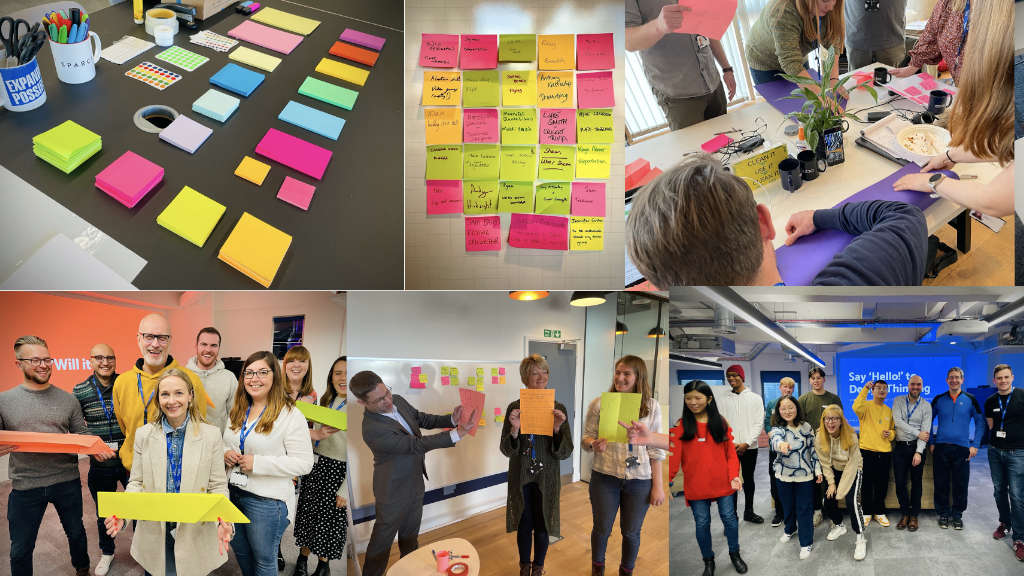
Say hello to design thinking
If you’re curious about how to get started, the team at SPARCK has a great introductory workshop called ‘Say hello to design thinking’.
In this practical session, you’ll get an insight into the why, the what and the how as well as practical tips to help you boost your creative confidence.
Get in touch if you’re interested in having us run a session for your business, college or organisation.
Or if you’d like to learn more about creative ways to parent, and how to stop your kids asking “Are we nearly there yet?”, check out the video of my #DesignThinkingDad talk from the Leeds Digital festival.
After all, what greater gift can we give our children than the ability to empathise, communicate and collaborate to solve problems?



